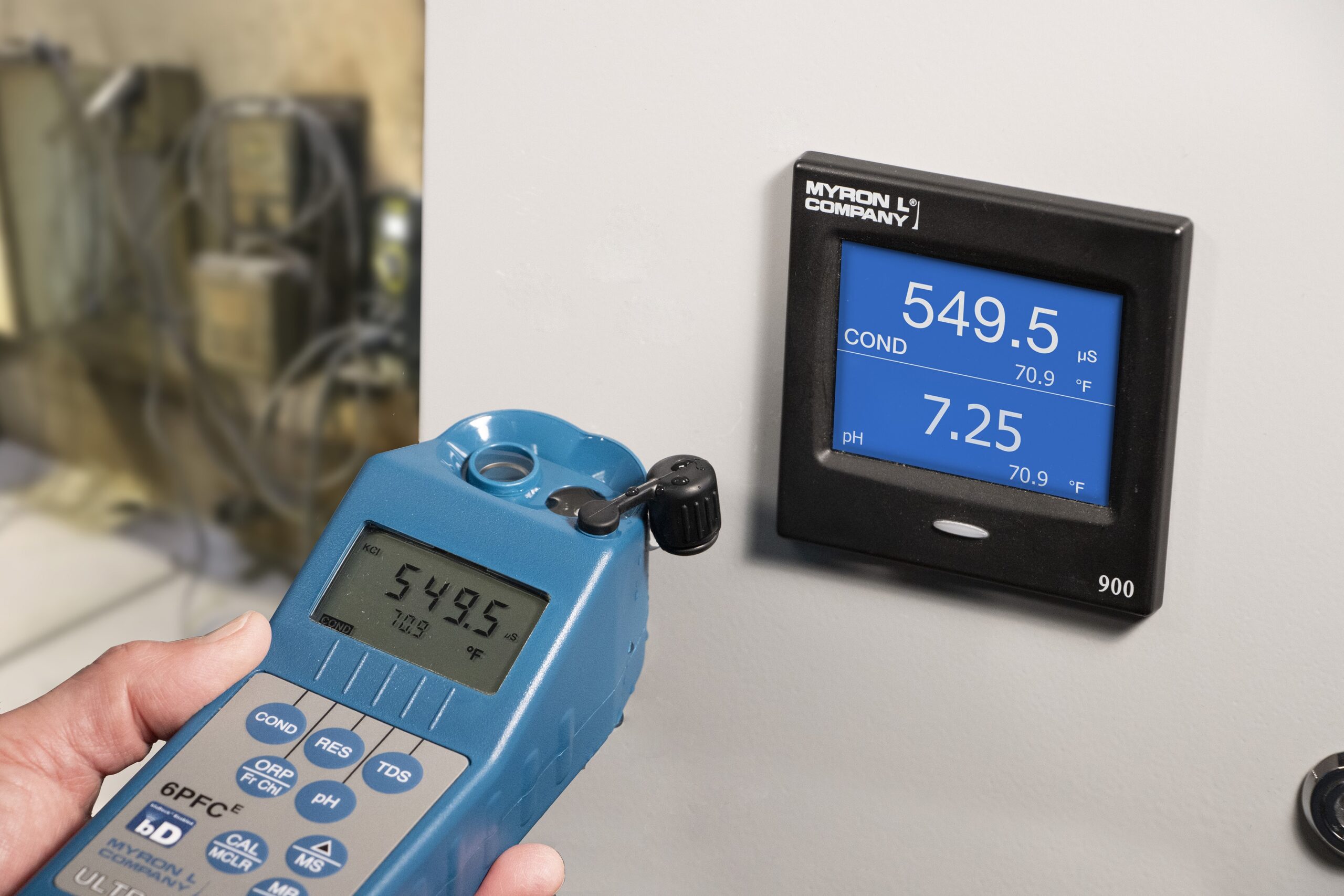
Close


An FAA Certified Part 145 Repair Station MRO facility was unable to discharge to their POTW because the hexavalent chromium Cr(VI) concentration in their wastewater stream was over the regulated discharge limit. The manager of the facility called Electroplating Consultants International in to solve the problem. ECI provides expert consultation and technical assistance to remediate and optimize metal finishing operations throughout the United States.
Though Cr(VI) is a required micronutrient for human health, it is highly soluble and occurs naturally in animals, vegetation, and minerals. It is a regulated contaminant in drinking water because it can cause gastrointestinal, liver, and developmental toxicity in humans when ingested. The EPA Drinking Water Standard for Total Chromium, which includes Cr(III) and Cr(VI), is .1mg/L or 100 parts per billion. Because most POTWs are not equipped to remove chromium from sewage, they rely on industry compliance with effluent permit limits to prevent discharge contamination of surface waters. This prevents subsequent chromium breakthroughs at drinking water treatment plants. The MRO effluent discharge limit for Cr(VI) is a stringent 1 mg/L or 1 part per million, which is effectively no Cr(VI).
Cr(VI) is an unavoidable waste product when refurbishing and manufacturing heat exchangers for aircraft using chemical conversion coatings approved by the FAA. The MRO uses a formulation of BONDERITE found in the Qualified Product List of products under performance specification MIL-DTL-81706 Chemical Conversion Materials for Coating Aluminum and Aluminum Alloys, as indicated by the FAA. Cleaned and prepared heat exchangers are dipped into the Cr(VI)-based BONDERITE (known as ALODINE) solution to dissolve and displace aluminum at the very surface with chromate. This passivated layer provides corrosion protection and improves paint adherence post process. Because the heat exchangers are comprised of many thin tubes, they retain a large amount of the Bonderite solution after processing such that there is a tremendous amount of carryover of Cr(VI) into the rinse tanks.
It is the rinse-tank wastewater that then must be treated to comply with discharge limits imposed on the MRO. Here Cr(VI) cannot be removed by conventional hydroxide precipitate methods. Instead, a reduction step is required to convert all Cr(VI) into Cr(III). The reduction is visible as the solution changes from a reddish brown to a blue green. At this point the chromate active sites are accessible, and the Cr(III) is complexed with three sodium hydroxide molecules forming a metal hydroxide micelle. The addition of a small amount of polymer increases the weight of the micelle and allows it to settle in a clarifier. The wet sludge is then removed via an AOD pump and put through a filter press, which makes a cake of the solids and squeezes out all remaining water. This clean water goes back into the process tank for processing, and the cake is hauled off and disposed of.
ECI immediately identified sloppy dosing by existing controllers and excess polymer and bisulfite treatment as problems for the MRO. ECI selected Myron L® Company 900 Series controllers for both pH and ORP control based on experience with their high degree of accuracy and reliability. The units were also manufactured to the standard ¼ DIN size shared by the old controllers making control panel replacement easy. Myron L was able to overnight the units for a Saturday delivery so installation could be completed the following Monday morning.
Sodium hydroxide concentration was then regulated via pH control between 7.5 to 8, and bisulfite addition was regulated via ORP control between 130-140 mV. Cr(VI) levels were immediately reduced to 0.96 ppm with haul-offs and recirculation no longer needed.
ECI then incorporated additional changes using innovative chemistry that enabled the MRO to reduce caustic and sulfuric usage while eliminating the need for standard bisulfite treatment. This immediately made working conditions safer for the MRO’s employees.
The solid waste generated by the new chemistry is lower in volume than that generated by the bisulfite, more stable, and anticipated to pass a Toxic Characteristic Leachate Procedure (TCLP).
The MRO continues to maintain compliance with their discharge limits, and their most recent chromium concentration test indicated a negligible 0.013 ppm.
A large manufacturer of residential HVAC systems began experiencing water spotting and increased chemical consumption in their powder coating operations as they increased production.
Myron L distributor, Electroplating Consultants International, proposed four interventions including counterflowing rinse water and incorporating at-tank, continuous monitoring of water conditions via a Myron L water quality management system.
ECI installed 900 Series Monitor/Controllers for all five stages of the pretreatment process because of their accuracy, multi-parameter capability and the service Myron L had provided on their 720 system. The 900 Series instruments have proved to be reliable under continuous operations for close to 2 years. They communicate the status of pH, Conductivity/TDS, and Temperature parameters in real time. At Stage 4, chemical feed is controlled via a 900 using variations in pH values. The manufacturer uses the handheld 6PFCE-BD to validate the 900 Series’ performance with variation between the two instruments not exceeding .1 pH point on Stage 4 and 25 ppm TDS on Stage 5. The manufacturer has also implemented a new heavy-duty pH probe from Myron L that resists attack from hydrofluoric acid in the Zr coating chemistry.
The manufacturer has stabilized its pre-treatment chemical processes and cut Stage 4 chemical consumption in half. Part density on the line has increased by 25% as the racks went from 5ft to 4ft centers. Line speed has increased from 20ft per minute to 25ft per minute. The production manager reports that overall production throughput is up in excess of 25%.
